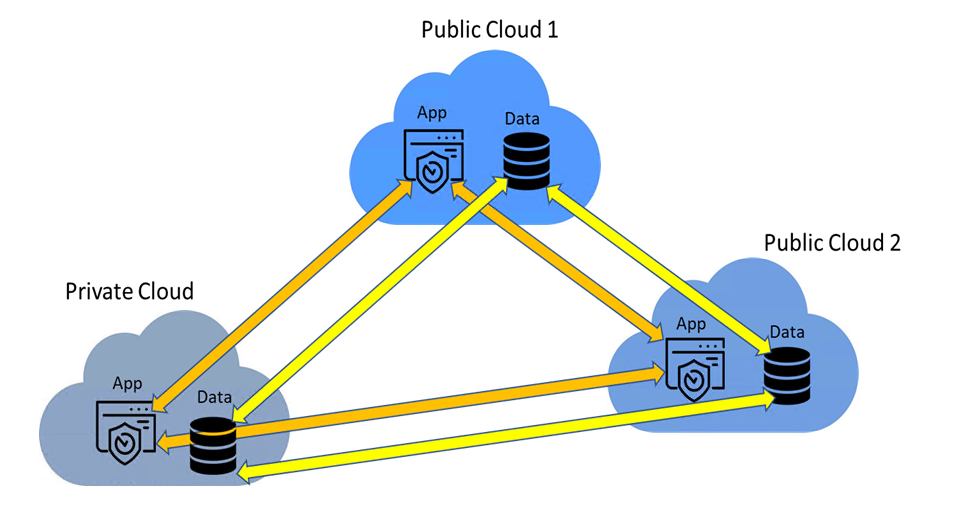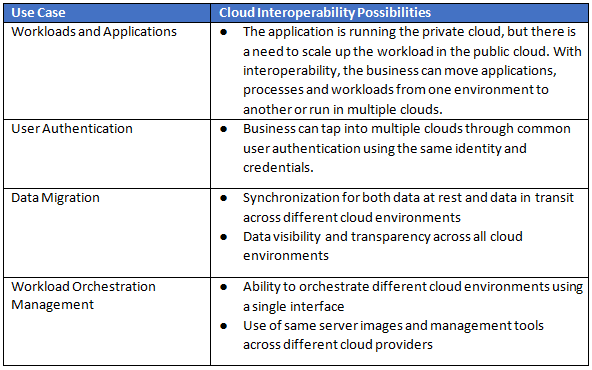
To say cloud technology has advanced by leaps and bounds in the past decade would be an understatement. We can talk about convenience, security and storage, but cloud technology in 2020 offers much more. It’s gone from being little more than a cost-effective data centre to completely revolutionizing the way we do business, altering boardroom perspectives and shaping new strategies. CEOs and CTOs are no longer talking “cloud,” they’re talking “cloud strategy.”
In this piece, we’ll look at some of the many options facing businesses today, from hybrid cloud to multi-cloud solutions. We’ll also assess the importance of cloud interoperability, explain what it is and flag the potential obstacles a business might face in pursuing it. But first, we have to address the elephant in the room: the fallout from COVID-19.
Faster cloud adoption, by necessity
There’s no question that the pandemic has had a devastating impact on lives and economies around the world. If there is any consolation, however insignificant in comparison, it’s that it has acted as a catalyst for a change that was probably destined to happen. As businesses adapt to remote and agile working, they’re adopting cloud technology at a faster rate than ever before in order to ensure business continuity and de-risk their operations. In addition to the security, scalability, accessibility and ease of workload migration that come with the cloud, employees are likely to find their roles become more flexible, productive and personalised. What’s more, businesses might finally see the risk of vendor lock-in changing as the cloud market starts to adapt.
But, for cloud adoption to truly succeed at scale, companies will need to consider how they integrate applications and data across multiple cloud providers, using a combination of private and public architectures. This is where cloud interoperability comes into play, and also its biggest hurdle.
What is cloud interoperability?
Put simply, cloud interoperability is a measure of the ability of any system to communicate and integrate applications and data across multiple cloud providers. Quite often, companies will need to use a combination of private and public networks, and that’s where things can get tricky. Cloud adoption has evolved so quickly that the cloud community has yet to define a universal set of standards or interfaces for enabling cloud interoperability that doesn’t involve some kind of vendor lock-in.
As many readers will know, vendor lock-in refers to a situation where an organization has selected a specific cloud provider and cannot switch. Sometimes this is due to contracts and migration costs but, more often than not, it’s because switching providers would require the business to completely overhaul their APIs and develop new interfaces.
The removal of these barriers would lead to true interoperability, and this alone is the key to unleashing the true potential of cloud computing. Once this door is unlocked, hybrid cloud and multi-cloud solutions will be able to interact with each other seamlessly, giving companies much more control over how they work and how quickly they evolve.
Cloud interoperability in practice
We can all agree that most cloud ecosystems generally consist of workloads, applications, data, management tools, server images and infrastructure components – all things a healthy, burgeoning business needs. However, running this plethora of services across a combination of private networks and public cloud spaces (often run by different providers), can be difficult.

Let’s take workloads and applications as an example. If an application is running on a private cloud network but needs to scale the workload using the public cloud, it has two choices. Either it can move the applications, process and workloads from one environment to another, or run it in multiple clouds to maximise efficiency. Here are some general use cases that demonstrate the point:

Enterprises are quite rightly exploring these multi-cloud operating environments to avoid vendor lock-in. If a business were to use public cloud services, they’d likely become dependent on a single provider, which could have a negative – perhaps even disastrous – impact on their plans for growth. Enterprises in 2020 no longer want to bind themselves to a single provider, but the lack of cloud interoperability is making it tough.
Solving the interoperability challenge
Most readers will be aware of Infrastructure as a Service (IaaS), Platform as a Service (PaaS) and Software as a Service (SaaS (News - Alert)). This is the holy trinity of the cloud landscape. While IaaS and PaaS offer some leg room in terms of interoperability, SaaS still has a lot of work to do. IaaS uses an OCCI (Open Cloud Computing Interface) and has at least some specifications delivered through the Open Grid Forum. Likewise, PaaS utilises open source platforms like Cloud Foundry that integrate seamlessly with other cloud-native technologies. SaaS, in contrast, poses much greater integration challenges due to the basic lack of standard APIs.
So, what’s the answer?
Currently, the best bet is to implement an abstraction layer between the application and cloud service interface, complete with well-defined user interfaces, APIs, protocols and friendly data formats. It may seem like cloud providers would be reluctant to build such solutions – after all, they are businesses too, and what business wouldn’t want an exclusive relationship with its customers?
Giants like Amazon Web Services (News - Alert), Microsoft and Google have, in the past, preferred to segment their cloud environment and services from each other, perpetuating the vendor lock-in situation. This lack of interoperability has forced enterprises to build their IT systems flexibly to get the best of all breeds. The current pandemic will likely push companies of all colours toward the public cloud quite rapidly, hopefully triggering the change we need toward true interoperability. At the very least, it’s a step in the right direction.
About the authors: Arpna Gupta is a Principal Systems Engineer and Vijay Anand is an Assistant Vice President of Technology at Altran, the world leader in engineering and R&D services. In April, Altran was acquired by Capgemini (News - Alert).[DF1]torrent?
Edited by Erik Linask




